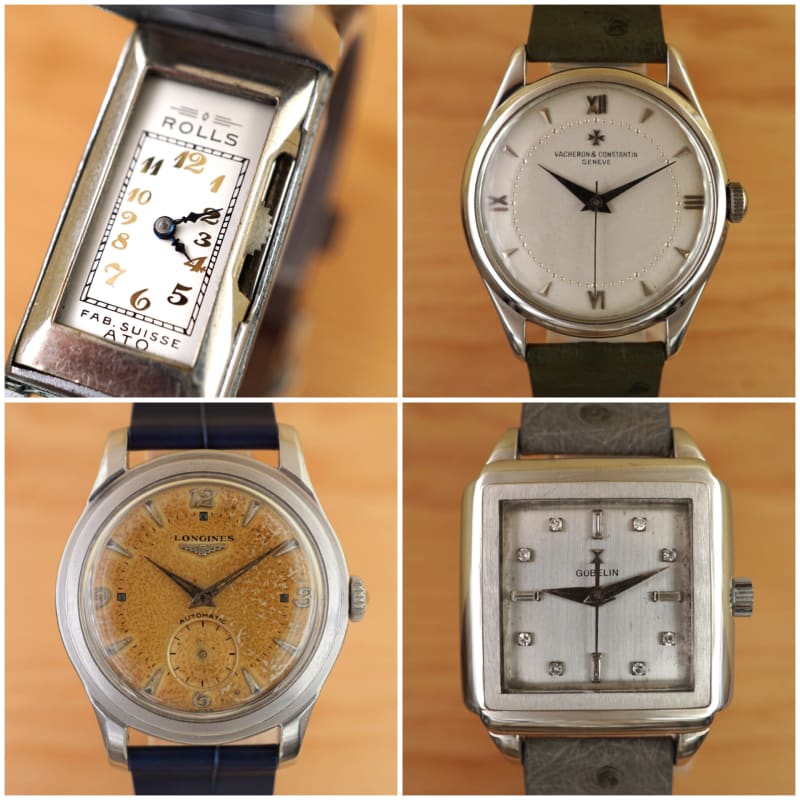An "automatically winding" watch -- the wet dream of watchlovers since the late 1920s and thus long before the miniaturized button-cell battery could be used to "wind" / power an electro-mechanical watch like the Hamilton cal500 (1957) or the Lip calR27 (1958).
Automatically is however an euphemism for these early examples, where the wrist has to be moved extra to make sure enough power could be converted with low efficiency to wind the mainspring -- a similar phenomenon that appears today with higher efficiency-movements but lower activity of the office-working wearer.
Anyway, it's called automatic and it came in a dozen tastes like the Blancpain-Ato Rolls (photo top-left), the quirky Autorist and the pendulum-based Perpetual by J. Harwood and some others (@misterRolex on Instagram is a wealth of information on these early automatics) all before the movement-manufacturer Aegler invented the rotor-automatic with a clutch for Rolex. The following 20 years progress was blocked and made by Rolex exclusively (almost) by Rolex patenting this automatic-winding mechanism that allows the rotor to go 360° from 1933 onwards -- so until the mid '50s. But there were some circumventions: the bumper-automatic (to prevent the rotor going 360°), the Longines cal22A and the Felsa cal690 to name the most relevant.
The bumper automatic is an answer to satisfy customer-demand for automatics used by JLC, Vacheron (photo top right, 1951), Movado, Zenith and of course Omega. The Longines cal22A (photo bottom left) instead uses a rotor and powers some rare Longines, solely. And the Felsa Bidynator was the first movement that allowed bi-directional winding and was used by several brands: Breitling and Gubelin (photo bottom right) for example.
The latter two were able to circumvent the patent by allowing bi-directional winding and a slightly different power-transformation mechanism -- Perpetuals ex Rolex.
Sure, an early Rolex Perpetual is an important watch and a #horologicalMilestone (*klikk) -- this is obvious and trivial. But the not so popular Longines cal22A and the Felsa cal690 may be overlooked, although they are interesting solutions and horological innovations as well.
